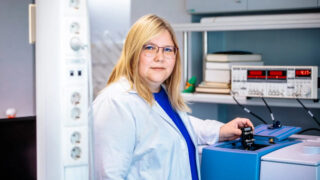Members

Head of the research team
Publications
Projects
Recognitions
“Top Viewed Article” published in Advanced Syntesis and Catalysis (A. Krech et al. https://doi.org/10.1002/adsc.202300939)
The Erkki Truve Doctoral Study Scholarship in the department of Chemistry and Biotechnology, Tallinn University of Technology, Tallinn, Estonia.
Order of the White Star, 4th Class, of the Republic of Estonia